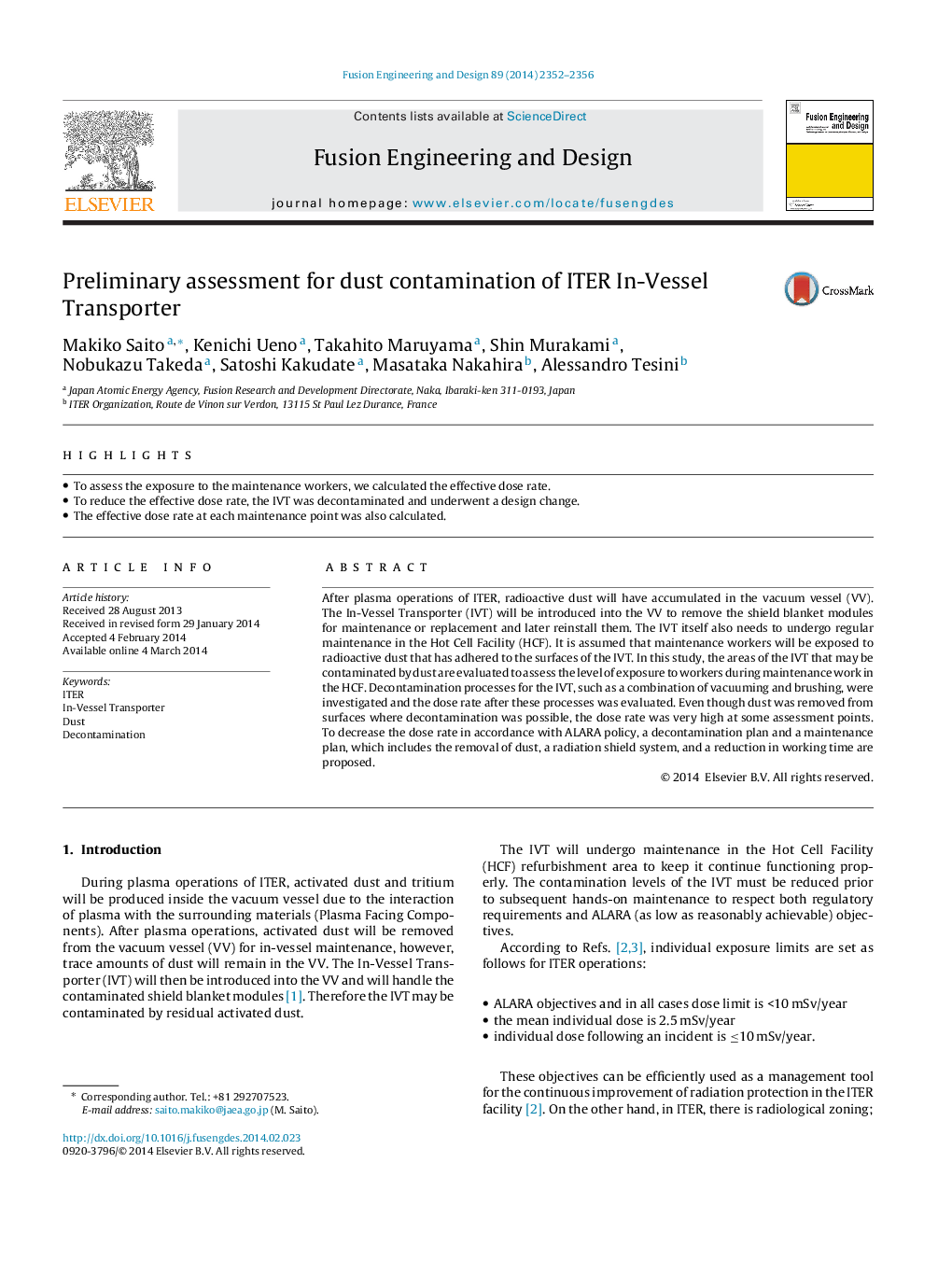| Article ID | Journal | Published Year | Pages | File Type |
|---|---|---|---|---|
| 271564 | Fusion Engineering and Design | 2014 | 5 Pages |
•To assess the exposure to the maintenance workers, we calculated the effective dose rate.•To reduce the effective dose rate, the IVT was decontaminated and underwent a design change.•The effective dose rate at each maintenance point was also calculated.
After plasma operations of ITER, radioactive dust will have accumulated in the vacuum vessel (VV). The In-Vessel Transporter (IVT) will be introduced into the VV to remove the shield blanket modules for maintenance or replacement and later reinstall them. The IVT itself also needs to undergo regular maintenance in the Hot Cell Facility (HCF). It is assumed that maintenance workers will be exposed to radioactive dust that has adhered to the surfaces of the IVT. In this study, the areas of the IVT that may be contaminated by dust are evaluated to assess the level of exposure to workers during maintenance work in the HCF. Decontamination processes for the IVT, such as a combination of vacuuming and brushing, were investigated and the dose rate after these processes was evaluated. Even though dust was removed from surfaces where decontamination was possible, the dose rate was very high at some assessment points. To decrease the dose rate in accordance with ALARA policy, a decontamination plan and a maintenance plan, which includes the removal of dust, a radiation shield system, and a reduction in working time are proposed.
